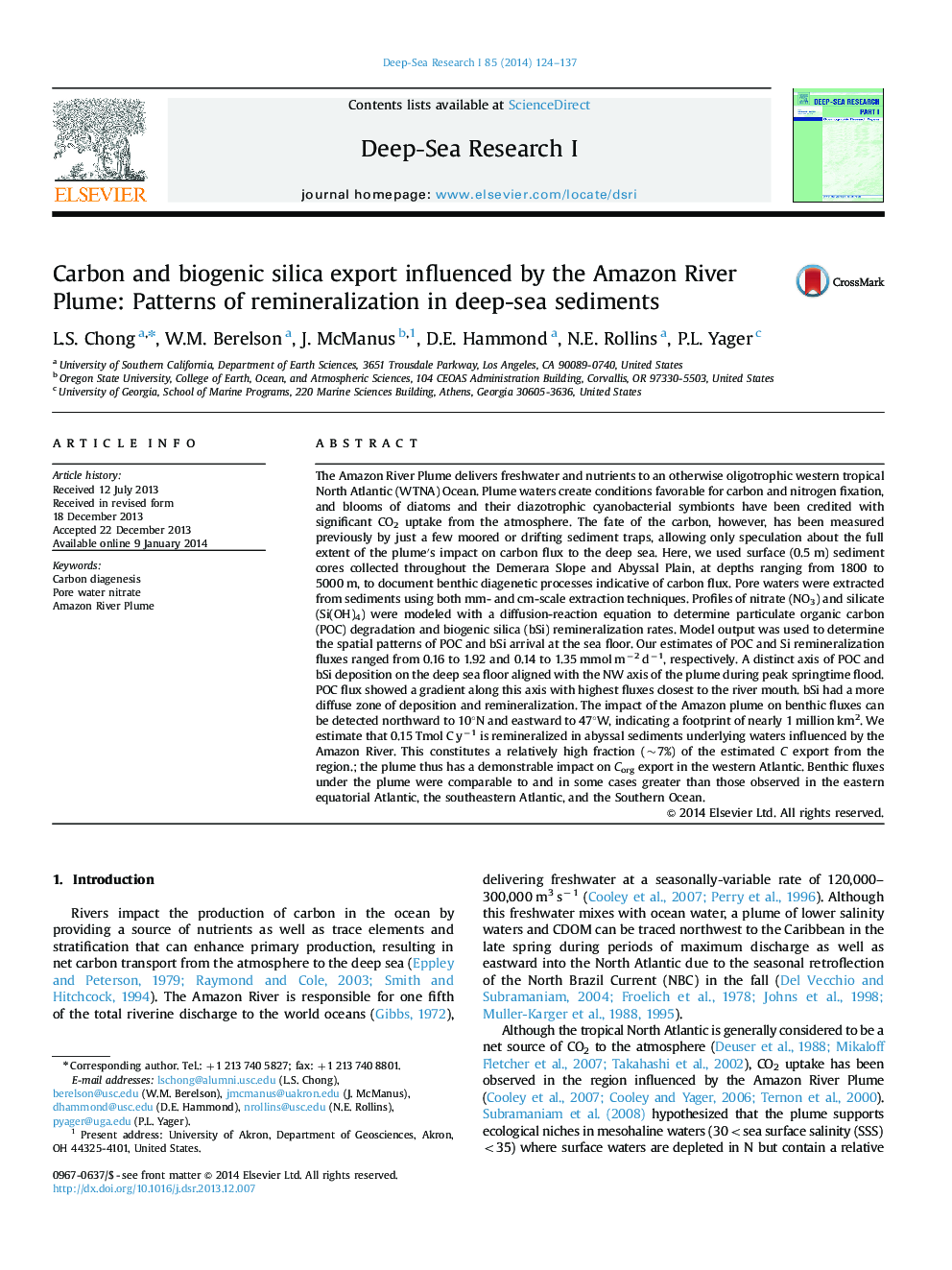| Article ID | Journal | Published Year | Pages | File Type |
|---|---|---|---|---|
| 4534558 | Deep Sea Research Part I: Oceanographic Research Papers | 2014 | 14 Pages |
•Pore water profiles of NO3 and Si(OH)4 were modeled to define remineralization rates of Corg and bSi.•Corg remineralization shows a distinct gradient following the path of the NW Amazon River Plume.•Highest rates of bSi remineralization occur further up the axis of NW plume progression.•Highest fraction of ‘fast’ reactive Corg lies in NW plume axis.•Lowest fraction of ‘fast’ reactive Corg lies in path of eastward plume retroflection.
The Amazon River Plume delivers freshwater and nutrients to an otherwise oligotrophic western tropical North Atlantic (WTNA) Ocean. Plume waters create conditions favorable for carbon and nitrogen fixation, and blooms of diatoms and their diazotrophic cyanobacterial symbionts have been credited with significant CO2 uptake from the atmosphere. The fate of the carbon, however, has been measured previously by just a few moored or drifting sediment traps, allowing only speculation about the full extent of the plume's impact on carbon flux to the deep sea. Here, we used surface (0.5 m) sediment cores collected throughout the Demerara Slope and Abyssal Plain, at depths ranging from 1800 to 5000 m, to document benthic diagenetic processes indicative of carbon flux. Pore waters were extracted from sediments using both mm- and cm-scale extraction techniques. Profiles of nitrate (NO3) and silicate (Si(OH)4) were modeled with a diffusion-reaction equation to determine particulate organic carbon (POC) degradation and biogenic silica (bSi) remineralization rates. Model output was used to determine the spatial patterns of POC and bSi arrival at the sea floor. Our estimates of POC and Si remineralization fluxes ranged from 0.16 to 1.92 and 0.14 to 1.35 mmol m−2 d−1, respectively. A distinct axis of POC and bSi deposition on the deep sea floor aligned with the NW axis of the plume during peak springtime flood. POC flux showed a gradient along this axis with highest fluxes closest to the river mouth. bSi had a more diffuse zone of deposition and remineralization. The impact of the Amazon plume on benthic fluxes can be detected northward to 10°N and eastward to 47°W, indicating a footprint of nearly 1 million km2. We estimate that 0.15 Tmol C y−1 is remineralized in abyssal sediments underlying waters influenced by the Amazon River. This constitutes a relatively high fraction (~7%) of the estimated C export from the region.; the plume thus has a demonstrable impact on Corg export in the western Atlantic. Benthic fluxes under the plume were comparable to and in some cases greater than those observed in the eastern equatorial Atlantic, the southeastern Atlantic, and the Southern Ocean.
